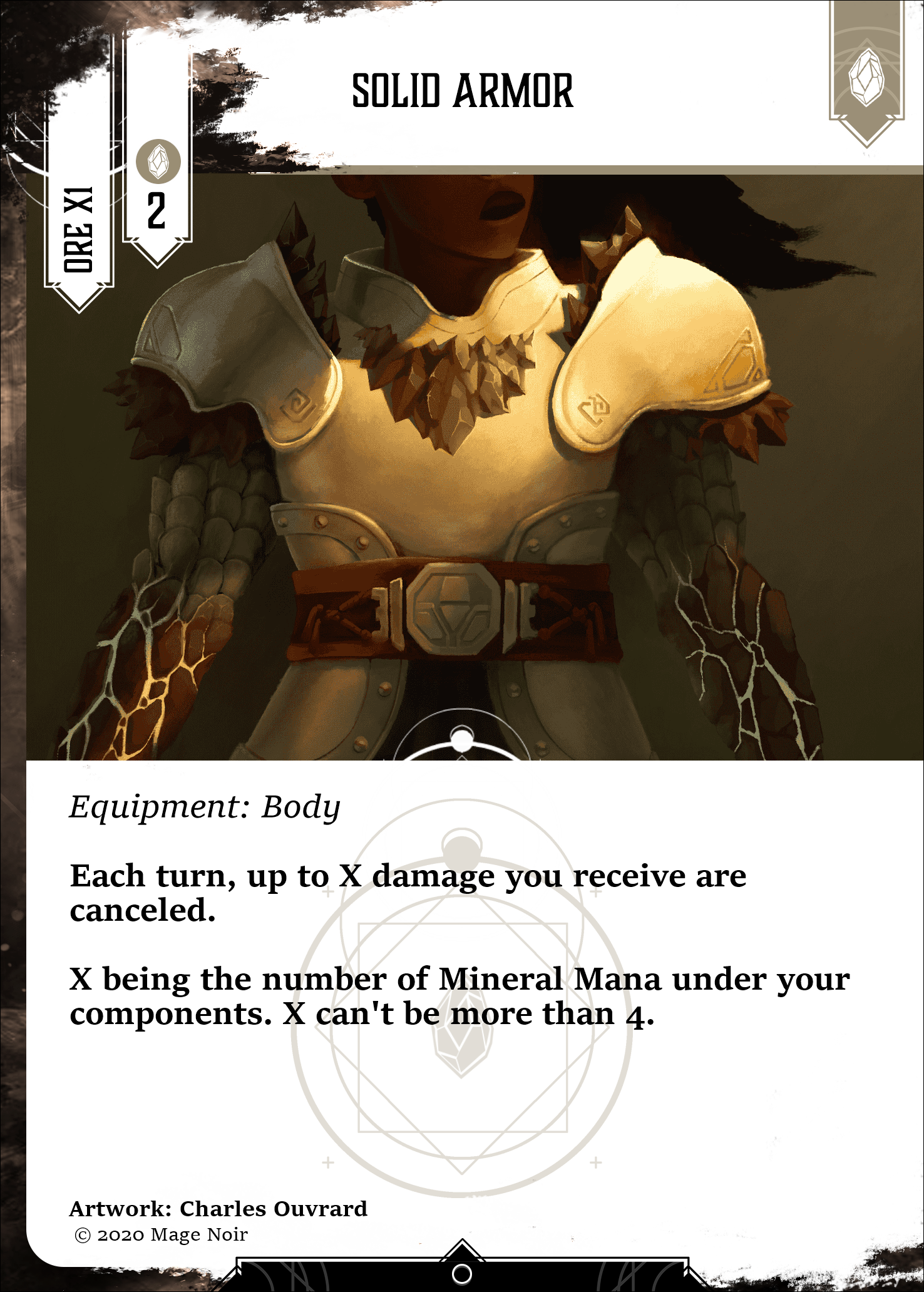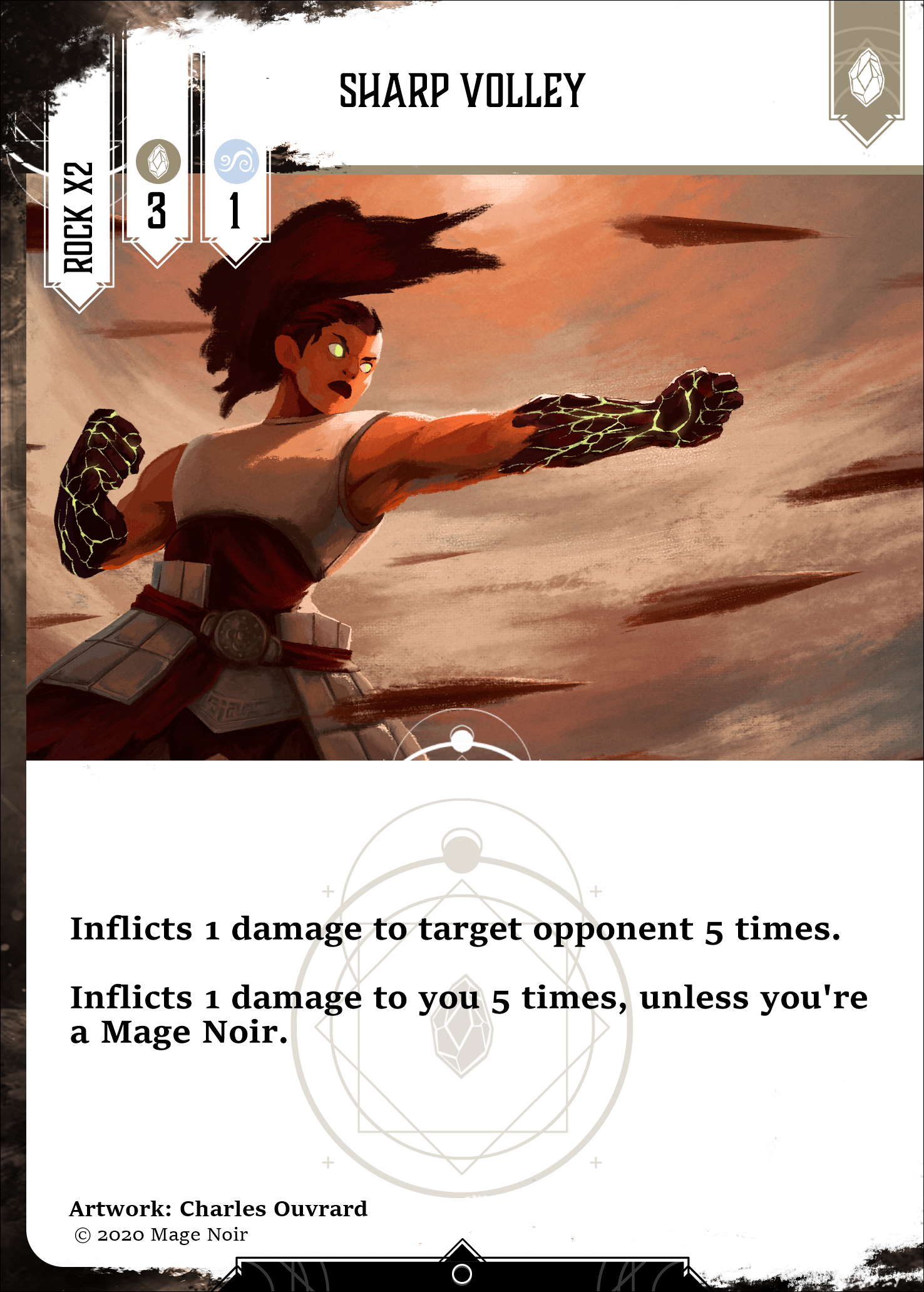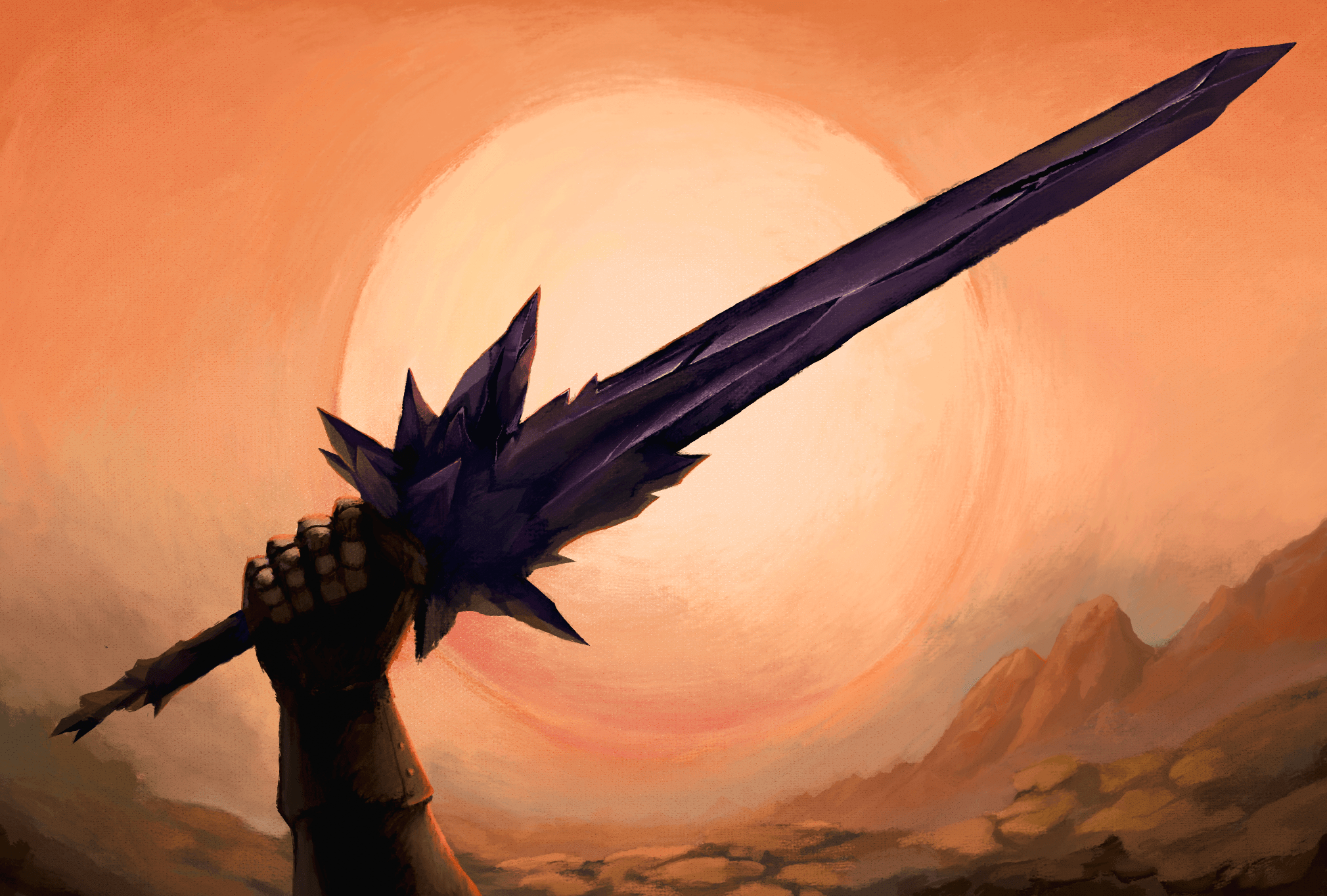Kill two birds with one stone, March 14, 2021
Hey Mages! One more game design discussion about our elements. Today we talk about the unbreakable will, the late game tank… today we talk about the Mineral element.

Earthquake by Charles Ouvrard
So what is Mineral about exactly?
One neat thing about the Mineral element is that it already has a very simple and straightforward identity by nature. Mineral is resistant but it doesn’t move much. Which was a pretty accurate representation of what RPG players would call a “Tank”. Taking hits without flinching but quite slow and not very subtle.
Mineral has two aspects that can be linked to two distant periods of history.
The first one linked to the beginning of earth: rocks.
The other one is the thing that revealed their potential with human intervention: metals. With this second aspect, Mineral was also the best element to encapsulate the feel of a branch of Mages that would make their own weapons and armors to fight.
So we can summarize the main themes of Mineral as:
- Sturdy
- Equipment heavy
- Devastating
What we did with Mineral
The first two main concepts of Mineral were very simple to pair. Some of the first cards we made for this element were Equipment cards. The idea was to create armors to start with. It would both give the player that idea of a knight mage ready to brawl and hard to hit. So to start with we created an equipment that would reduce the damage you take by a fixed amount. This proved to be very efficient against some elements like Air. Too efficient to be precise. Mineral ended up invincible a bit earlier in the game than we wanted.
So we kept these kinds of effects for late game armors, giving us more ideas for powerful gear as well as a very efficient way to fulfill the invincible tank fantasy that many Mineral players wanted.


But that’s not the only way we could make Mineral sturdy. Just like with Vegetal, we decided to use Permanents with HP. But to ensure that Mineral and Vegetal would work differently, Mineral Permanents are immobile and don’t act by default. Their advantage over Vegetal however is that their death is less of a punishment. Trees are needed to grow forests, but Stone Walls are just there to buy you some time.
So unlike Vegetal, Mineral Permanents are less central. A premature loss of a Permanent wouldn’t prevent you from casting other spells most of the time. Even better, some of them are channeled as componants directly instead of going to the discard pile when they reach 0 HP.
This mechanic is pretty logical as we figured that when a rock wall is destroyed, the rocks are still there after all.
Speaking of components…
This is also a very interesting topic concerning Mineral, as our first take on the element gave birth to two different kinds of components: Rocks and Ores.
The concept was pretty simple: Rock components were used to cast stone spells, throwing huge boulders, deadly shards and overwhelming meteores. Ore components were special components used to craft armors, weapons and all kinds of Equipment. This was logical but it was problematic as it gave Mineral two main branches of components that wouldn’t work much with each other. It required too many basic components spells and not a lot of concrete (haha) powerful abilities.
Using the logical way nature works, we decided to merge rocks and ores. Now most rock components can be used as ore components under certain conditions. If they are used together, if the ore is extracted or if they are carved properly for instance. Fire Mana may be involved…

Materialized sword by Charles Ouvrard
But using those components for Weapons would still imply that they are used and forged as part of the equipment. Which justifies that when used as an Ore component, those spells are directly discarded and are now part of the Equipment itself.
And what about the devastating part?
We thought that given the raw power of Earthquakes and Meteors, Mineral also earned his place as a heavy hitter. Going for (very) strong spells but at a very high cost. Designing this type of card meant to be a late game threat is a pretty fun thing to do. It allows us to really go for some really strong effects. So Mineral also became a true specialist at hitting everything. And by everything, we also mean itself. This was even more interesting to create as we also figured that late game mineral players may also have an armor equipped, protecting them from their own spells.


The end result is very satisfying to play since it gives a very strong late game, but leaves the player pretty exposed early on, which was exactly the intended playstyle of Mineral. In the end we’re pretty proud of how it turned out.
But we’ll let you discover all of that when you play Mineral for the first time.
See you later Mages!
After all it’s not a coincidence that the character whose name is Rocky said “It’s not about how hard you hit. It’s about how hard you can get hit and keep moving forward”. This represents Mineral very well actually. Give it a try if you want to feel like a true champion.
You all know what’s gonna be the next Element talk and I know a lot of you are very excited for it.
So until next time though, take care of yourselves Mages, and have fun!